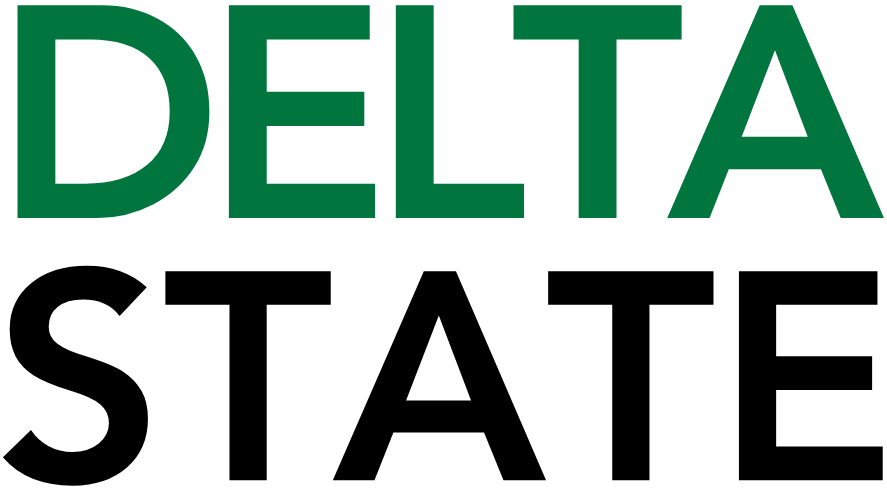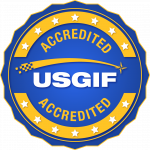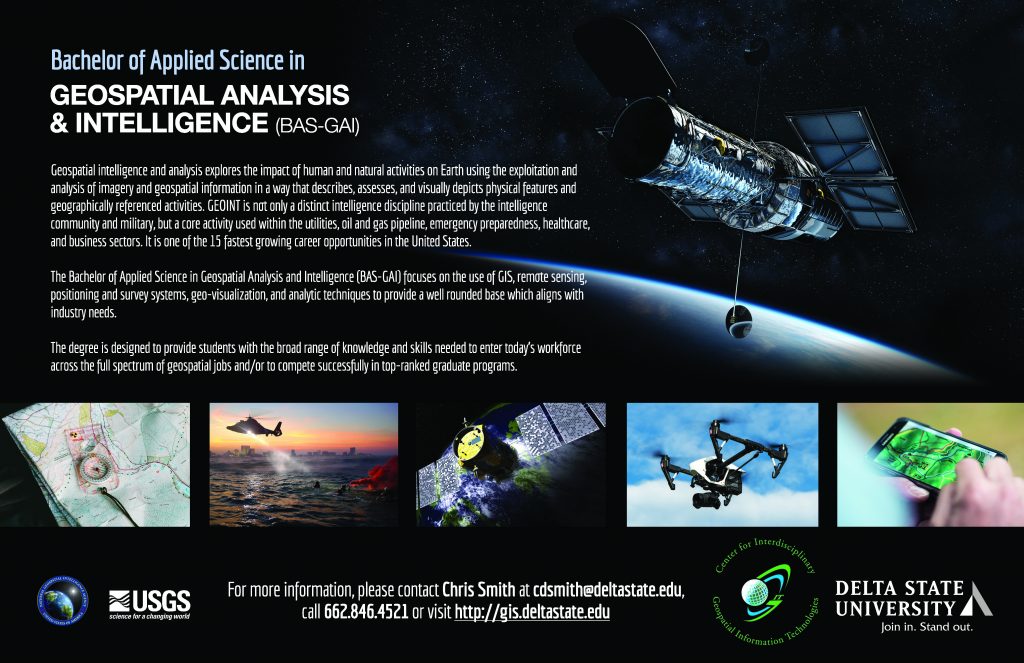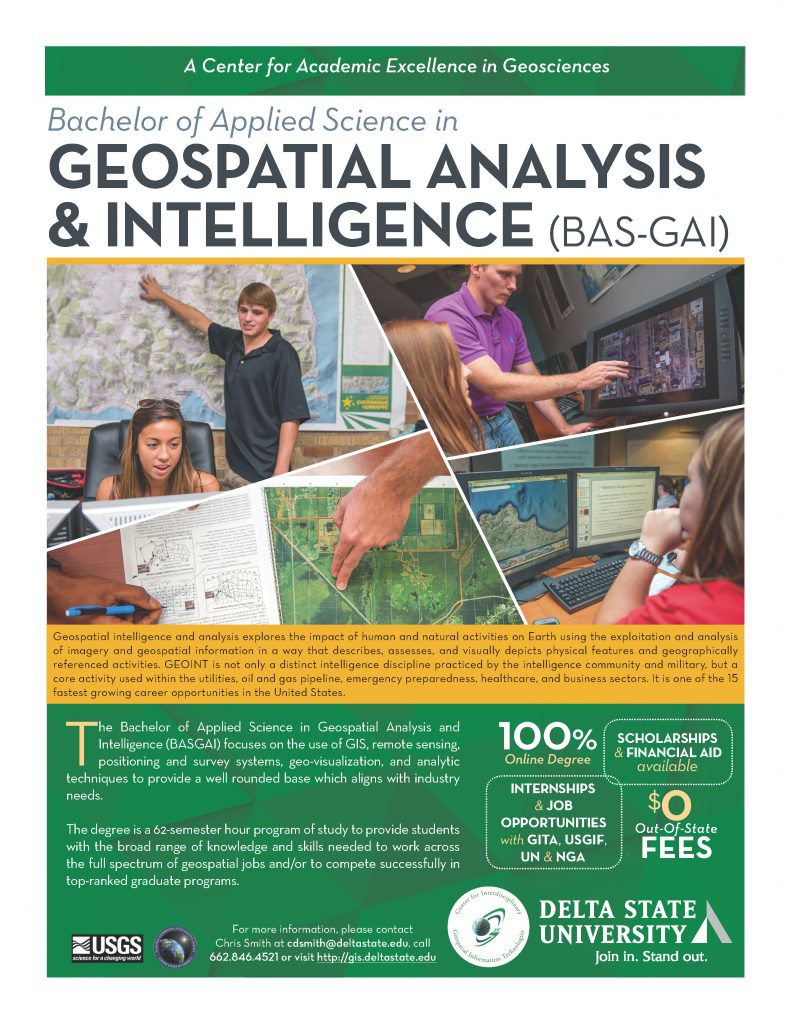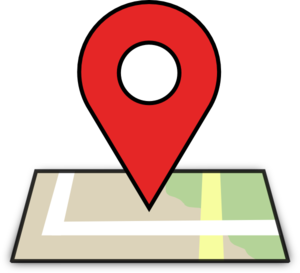The Bachelor’s of Applied Science in Geospatial Analysis and Intelligence is a 120-semester hour program of study (68-semester hour core GIS hours) to provide students with the broad range of knowledge and skills needed to work across the full spectrum of geospatial jobs and/or to compete successfully in top-ranked graduate programs. The program of study is delivered using a phased approach in partnership with Mississippi Delta Community College. The program of study is also tailored to fit the demands of active duty military personnel:
- Tuition is closely aligned with military tuition assistance. We strive to keep the differences between the two as small as possible. For example, the differential in Fall 2019 is $70.08 a credit hour.
- All courses are available online through Delta State and our partner institutions.
- Student may complete 1-2 courses at a time, but will study year-round (a traditional program of study is also available). This allows the accumulation of credit pace similar to that done by full-time students, but spreads the workload out a bit.
- Faculty are flexible with due dates, strive to make materials highly available for download such that work may be completed in a disconnected environment.
- The curriculum fully supports both military and civilian credentialing programs such as those offered by NGA/GPC (PL-2), USGIF (the Universal GEOINT Certification process), GISCI (GIS Professional), and ASPRS (Certified Photogrammetrist and Certified Remote Sensing Scientist).
- Students may earn their Associate of Arts in General Studies from Mississippi Delta Community College as part of this program.
- Students may request virtual computing support if they lack access to a personal computer capable of running GIS and remote sensing software packages.
Delta State also offers an online Master of Applied Science in Geospatial Information Technologies, which provides advanced education and career opportunities for BAS-GAI graduates.
The links above show to the most current curriculum check-sheets and academic maps. Past information can be found on the Registrar’s Office page and the Academic Maps page.
More Information
Phase I
After a careful review of any prior coursework, students begin study with a single course such that they may adjust to the online environment. The first course generally fulfills a general education requirement. Thereafter, students complete primarily general education coursework and 3-4 geospatial courses. At the end of approximately 2-years, students will have completed the requirements for an Associate of Arts degree and most of their GenEd core for the BAS-GAI.
Phase II
Students will complete a broad spectrum of coursework in geospatial technologies – everything from GIS to basic surveying and remote sensing. This initial round of courses takes aim at building fundamental skills in data collection and management, GIS and remote sensing software use, cartography and visualization, and programming.
Phase III
The third phase of this programs involves intensive study in analytic techniques. Students will focus on geostatistics, signal processing, geomatics, report writing, qualitative and quantitative data analysis, data fusion, and contemporary research methods. Case studies will be presented by well known experts.
Phase IV
The fourth and final phase of study involves a Capstone experience. Students will work with either their employers or scientists and technicians working at the Center’s labs to engage in some real-world problem solving.
Year 1
Fall
- United States History to 1877, HIS 201. Political, social, cultural, and economic survey. 3, 3.
Spring
- Music in American Culture, MUS 114. An exploration of the history and culture of American life through music and other art forms. While drawing on Western elements, this course will be inclusive of a variety of ethnic musical traditions which are significant in the development of American fold, popular, and art music. 3, 6
- Introduction to Geospatial Science and Technology, GIS 202. This course is an introduction to the theory and practice of spatial science and technology using the scientific method as a learning gateway. Fundamental concepts include geodesy, coordinate systems and projections, basic computer science, inductive/deductive reasoning skills, data structures, hypothesis development and testing, map reading, land navigation, and GIS software skills. Practical exercises using GIS software, GPS, and map reading skills will reinforce theoretical discussions. Satisfies the General Education Lab Science requirement for non-science majors. Lecture 2 hours, laboratory 1 hour. 3, 9.
Spring Intersession
- English Composition, ENG 101. Introduction to and practice of the writing process, including discovering, ordering, and editing. 3, 12.
Summer I
- College Algebra, MAT 104. Review of fundamentals; linear and quadratic equations and inequalities; functions and graphs; systems of equations and inequalities; and theory of equations. 3, 15.
Summer II
- Public Speaking, COM 101. An introduction to the theory and practice of public speaking. 3, 18.
- GIS Internship (Surge), GIS 490. This is a variable hour course. Students will learn how to give a technical presentation, manage GIS projects, and perform deadline-sensitive work through a cooperative education or research program performed at their place of work, with a designated sponsor or through the Center. Students will be expected to meet/discuss progress and lessons learned with the instructor on a regular basis, maintain a journal of activities and hours worked, and prepare and deliver final project presentation and written report. 4, 22.
Year 2
Fall
- College Physics, PHY 110. Fundamental concepts of mechanics, heat, electricity, and light. Emphasis on methods, history, and theory of science. For non-science majors. Lecture 2 hours, laboratory 2 hours. 4, 26.
- World Regional Geography, GEO 303. Physical and human (cultural, economic, and political) characteristics of the principal regions of the world. 3, 29.
Spring
- General Psychology, PSY 101. An introduction to the scientific study of human behavior and mental processes. This includes history and theories of psychology, research methods, biological bases of behavior, the principles of learning, personality and abnormal behavior. 3, 32.
- Intro Remote Sensing, REM 316. Students will learn the fundamentals of remote sensing, including the principles of electromagnetic radiation, wave theory, the concept of a blackbody, how energy interacts with the atmosphere and terrestrial objects, and the principles of feature/object identification based upon spectral properties. Students will use remote sensing software to develop basic skills such as ortho-rectification, color balancing, tiling imagery, and automated feature recognition (supervised and unsupervised classification). Students will be exposed to a wide range of remote sensing products and their application areas including aerial photography, hyperspectral imagery, multi-spectral imagery, LiDAR, microwave, and RADAR. Lecture 2 hours, laboratory 1 hours. 3, 35.
Coursework/Surge
- English Composition II, ENG 102. A continuation of ENG 1113 with emphasis on research, argumentation and composition. Readings, essays, and a research paper are required. 3, 38.
Summer I
- United States History, 1877-Present, HIS 202. Political, social, cultural, and economic survey. 3, 41.
Summer II
- Principles of Sociology, SOC 101. Human behavior, including socialization, culture, social institutions, social stratification, gender roles, race and ethnicity, and social change. 3, 44.
Internship/Surge
- GIS Internship (Surge), GIS 490. This is a variable hour course. Students will learn how to give a technical presentation, manage GIS projects, and perform deadline-sensitive work through a cooperative education or research program performed at their place of work, with a designated sponsor or through the Center. Students will be expected to meet/discuss progress and lessons learned with the instructor on a regular basis, maintain a journal of activities and hours worked, and prepare and deliver final project presentation and written report. 3, 47.
Year 3
Fall
- General Biology I, BIO 100. Principles, concepts, and theories of biology including the origin of life, evolution, biological chemistry, cell biology, genetics, and metabolism. Lecture 3 hours, laboratory 2 hours. 4, 51.
Introduction to Literature, ENG 203. Short story and novel. Prerequisite: ENG 101 and 102, or 103. 3, 54.
Spring
- Microcomputer Applications, CIS 205. Introduction to microcomputer applications; emphasis on word processing, spreadsheet, database, and graphics software. Prerequisite: Keyboarding skills. 3, 57.
- Technical Writing, ENG 303. Practice in reporting technical information with attention to purpose and audience, logic and clarity, design and graphics, and documentation. Prerequisite: ENG 300 or 301. 3, 60.
Intersession/Course Surge
- Adv Geospatial Science & Tech (GIS II), GIS 310. Advanced geospatial science and technology theory and skills. Topics include GIS planning and management, workflow management, systems architecture, data conflation/deflation/ manipulation, 3-D surface generation and analysis, intermediate-level spatial analysis techniques, and network design and analysis. Software skills development will accompany each lecture topic. Lecture 2 hours, laboratory 1 hour. 3, 63.
Summer I
- Geospatial Mathematics, Algorithms, and Statistics, GIS 461. This is a geostatistics and geo-mathematics course, presenting the underlying principles and theory of GIS operations (raster, vector, or other data models), such as surface analysis, interpolation, network analysis, path optimization, topology, etc. 3, 66.
Summer II
- Physical Geography, GEO 202. Introduction to the Earth’s natural environment. Includes weather and climate, oceans and water resources, natural vegetation and ecology, soils, geology and geomorphology, biodiversity and conservation. A laboratory and lecture course for non-science majors. Same as PHY 202. (Does not meet general education Social Science requirements. Does meet requirements for a concentration or minor in Geography.) 3, 69.
Internship/Surge
- GIS Internship (Surge), GIS 490. This is a variable hour course. Students will learn how to give a technical presentation, manage GIS projects, and perform deadline-sensitive work through a cooperative education or research program performed at their place of work, with a designated sponsor or through the Center. Students will be expected to meet/discuss progress and lessons learned with the instructor on a regular basis, maintain a journal of activities and hours worked, and prepare and deliver final project presentation and written report. 2, 71.
Year 4
Fall
- Digital Image Processing, GIS 211. The art and science of digital image processing of satellite and aircraft-derived remotely-sensed data for resource management, including how to extract biophysical information from remote sensor data for almost all multidisciplinary land-based environmental projects, is presented. Includes the fundamental principles of digital image processing applied to remotely sensed data. Prerequisites: MAT 104 and 105 or equivalents. 3, 74.
Introduction to Human Geography, GEO 201. Study of the spread of cultural, economic, and political human activities and institutions across the earth through time. 3, 77.
Spring
- Fundamental Techniques in Surveying, GIS 241. Fundamentals of surveying, including geodesy, ellipsoids, coordinate systems, projections and the use of surveying instruments such as RTK GPS. 3, 80
- The Law and Surveying, GIS 351. The legal aspects of surveying, to include cadastral surveys, deeds, COGO, topology, and similar techniques. 3, 83
Intersession/Course Surge
- Case studies in GEOINT, GIS 341. Case studies in contemporary applications of geospatial intelligence and analysis. 3, 86.
Summer I
- Advanced Surveying, GIS 401. This course provides advanced analysis methods and techniques including LIDAR, OPUS, multi-unit networks, and automated/UAS survey techniques. 3, 89.
Summer II
- Military Geography, GEO 443. Historical geography of military landscapes in the U.S. South, often focusing on the Civil War landscapes of Shiloh, TN and vicinity. This course contains a strong field component. 3, 92.
Internship/Surge
- GIS Internship (Surge), GIS 490. This is a variable hour course. Students will learn how to give a technical presentation, manage GIS projects, and perform deadline-sensitive work through a cooperative education or research program performed at their place of work, with a designated sponsor or through the Center. Students will be expected to meet/discuss progress and lessons learned with the instructor on a regular basis, maintain a journal of activities and hours worked, and prepare and deliver final project presentation and written report. 3, 95.
Year 5
Fall
- Structured Analytic Techniques for Intel. Anal., GIS 411. Structured analytic techniques for intelligence analysis is a detailed exploration of intelligence capture and analysis techniques. Study of Big Data, Unstructured data analysis, sense-making loops and similar techniques for data discovery and hypothesis generation. 3 98
- Computerized Maps and Cartography, GIS 200. Presented as an introductory- level course, 128 students will explore spatial technologies through cartography. Students will explore scale, projections, coordinate systems, layout styles, color ramps, font selection, generalization, symbol selection and similar concepts through review of existing map products and the opportunity to create their own maps. Students will learn about the history of maps and their impact as visualization tools to influence governance/decision making, public opinion (maps in the news), and online-based mapping technologies. Lecture 2 hours, laboratory 1 hour. 3, 101.
Spring
- Information Extraction Using Microwave Data, REM 421. Presents the basic concepts, theory, and applications of microwave remote sensing. Topics include unique aspects of microwave radiation, passive microwave, fundamental principles of microwave (active), synthetic aperture radar, backscatter principles and models, interferometry, phase relationships, processing radar data. Environmental influences on radar returns and applications of these principles are presented. 3, 104.
- Programming GIS, GIS 470. This course is intended as an in-depth look at computer programming within Geographic Information Systems. The focus will be on GIS programming and methodology, utilizing practical GIS software skills and basic scientific computing skills. Software skills development will accompany each lecture topic. Lecture 2 hours, laboratory 1 hour. 3, 107.
Coursework/Surge
- Topographic Mapping, GIS 391. Students will learn to read, interpret, create, and publish topographic map products in accordance with current USGS standards. This includes the production of detailed marginalia, Geo-PDF formats, and the use of production editing and mapping tools to achieve a standardized map products at multiple scales and print sizes. Lecture 2 hours, laboratory 1 hour. 3, 110.
Summer I
- Trends in Spatial Technologies, GIS 421. Contemporary trends in geospatial technologies. 2, 112.
Summer II
- Programming/Applications Development, CIS 314. Use of modern programming languages to create PC and mobile technology-based apps. 3, 115.
Fall
- Internet GIS and Spat Databases, GIS 480. The purpose of this course is to provide students with an understanding of how Internet GIS and spatial databases work and to help them develop the skills requisite for success in this field. Software skills development will accompany each lecture topic. Lecture 2 hours, laboratory 1 hour. 3, 118.
Elective. 3, 121. - Physical Fitness. Elective physical fitness. 3, 124.

No Out-of-State Fees

USGS and NGA Center of Academic Excellence in Geosciences

Signature Program at Delta State
Please take time to explore our site and know that we’re always happy to talk with prospective sponsors, donors, and students.
E-mailing tbrooks@deltastate.edu or cdsmith@deltastate.edu is usually the best means of first contact, but we are also available at 662.846.4520 or 662.846.4521.
GET IN TOUCH
Talbot J. Brooks, Director
662.846.4520
tbrooks@deltastate.edu
Chris Smith, Program Manager
662.846.4521
cdsmith@deltastate.edu
Mailing Address
GIT Center
Delta State University
Box 3325
Cleveland, MS 38733-3325
Shipping Address
GIT Center
Delta State University
1417 Maple St.
Cleveland, MS 38733
Physical Address
GIT Center
Kethley Hall, Suite E
Delta State University
US National Grid
15SYT098364
